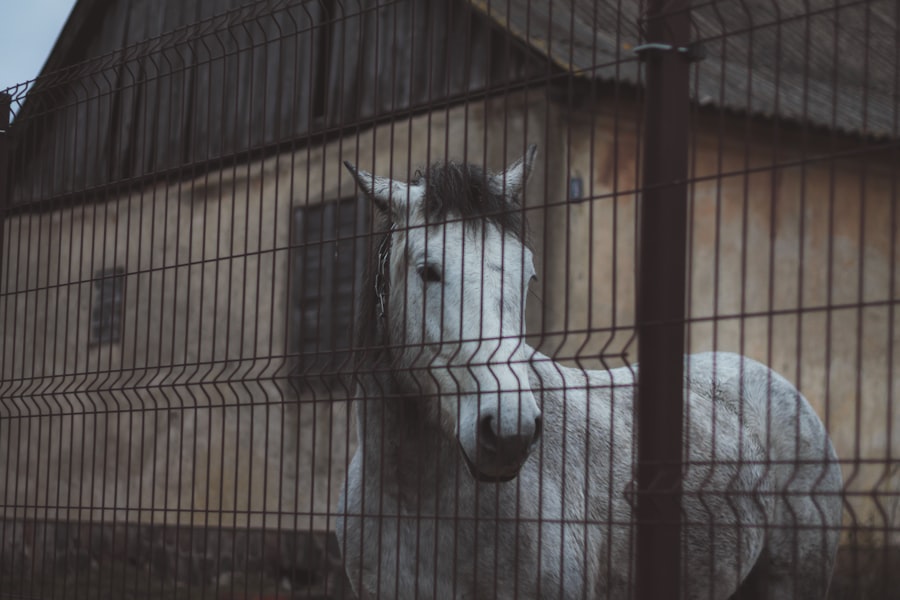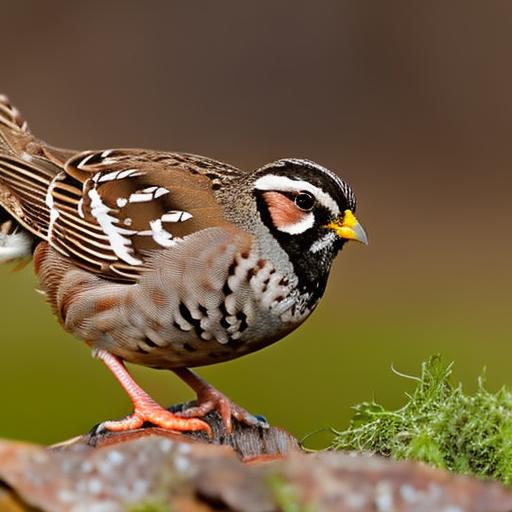Keeping quail inside can offer a range of benefits for both the quail and the owner. Firstly, indoor quail are protected from predators, harsh weather conditions, and potential diseases that outdoor quail may be exposed to. This can lead to a longer and healthier lifespan for the quail, as well as a reduced risk of injury or illness. Additionally, keeping quail inside allows for easier monitoring and care, as they are in a controlled environment where their needs can be more easily met. This can lead to a higher success rate in raising healthy quail and can provide peace of mind for the owner.
Furthermore, keeping quail inside can also be more convenient for the owner. Indoor quail are easily accessible for feeding, cleaning, and observation, making it easier to maintain their habitat and ensure their well-being. Additionally, indoor quail are not subject to the seasonal limitations that outdoor quail may face, allowing for year-round egg production and a more consistent supply of fresh eggs. This can be especially beneficial for those who rely on quail eggs for culinary or nutritional purposes. Overall, keeping quail inside can provide a range of benefits for both the quail and the owner, making it a practical and rewarding choice for those interested in raising quail.
Key Takeaways
- Quail can be kept indoors for easy access, protection from predators, and year-round egg production.
- Setting up a quail habitat indoors requires a spacious and well-ventilated enclosure with proper lighting and temperature control.
- Feeding and caring for quail in an indoor environment involves providing a balanced diet, clean water, and regular health checks.
- Maintaining cleanliness and hygiene for indoor quail is essential to prevent disease and ensure the well-being of the birds.
- Providing enrichment and entertainment for indoor quail can include perches, dust baths, and toys to keep them active and stimulated.
Setting Up a Quail Habitat Indoors
When setting up a quail habitat indoors, it is important to consider the specific needs of these birds in order to create a suitable and comfortable environment for them. Firstly, it is essential to provide enough space for the quail to move around and engage in natural behaviors such as dust bathing and foraging. A general rule of thumb is to allow at least 1 square foot of space per quail to ensure they have enough room to thrive.
In addition to space, it is important to provide appropriate bedding material such as pine shavings or straw to create a comfortable and clean living area for the quail. This bedding should be regularly cleaned and replaced to maintain hygiene and prevent the buildup of waste and bacteria. Furthermore, it is important to provide adequate ventilation to ensure good air quality and prevent the buildup of ammonia from quail waste. This can be achieved through the use of fans or vents in the quail habitat.
Finally, it is important to provide suitable lighting and temperature control to mimic natural daylight cycles and maintain a comfortable temperature for the quail. This can be achieved through the use of artificial lighting and heating devices as needed. Overall, setting up a quail habitat indoors requires careful consideration of space, bedding, ventilation, and environmental controls to ensure the well-being of the quail.
Feeding and Caring for Quail in an Indoor Environment
Feeding and caring for quail in an indoor environment requires attention to their specific dietary needs and daily care routines. Quail should be provided with a balanced diet that includes a high-quality commercial feed specifically formulated for quail, as well as access to fresh water at all times. Additionally, quail can benefit from the occasional supplementation of fruits, vegetables, and protein sources such as mealworms or crickets to provide variety and additional nutrients in their diet.
In addition to their diet, quail require daily care and attention to ensure their well-being. This includes monitoring their health and behavior, cleaning their living area regularly, and providing enrichment activities to keep them mentally and physically stimulated. Additionally, it is important to handle quail gently and minimally to reduce stress and maintain their natural behaviors.
Furthermore, it is important to monitor the egg production of female quail and collect eggs regularly to prevent overcrowding and ensure the health of the birds. Overall, feeding and caring for quail in an indoor environment requires attention to their dietary needs, daily care routines, and overall well-being to ensure they thrive in their indoor habitat.
Maintaining Cleanliness and Hygiene for Indoor Quail
Maintaining cleanliness and hygiene for indoor quail is essential for their health and well-being. Regular cleaning of the quail habitat is necessary to prevent the buildup of waste and bacteria that can lead to illness and discomfort for the birds. This includes removing soiled bedding, cleaning food and water dishes, and disinfecting the living area as needed.
In addition to regular cleaning, it is important to monitor the air quality in the quail habitat to ensure good ventilation and prevent the buildup of ammonia from quail waste. This can be achieved through the use of fans or vents to promote air circulation and maintain a healthy environment for the birds.
Furthermore, it is important to practice good hygiene when handling quail to prevent the spread of disease and maintain their overall health. This includes washing hands before and after handling the birds, as well as using separate equipment for different tasks such as feeding, cleaning, and collecting eggs.
Overall, maintaining cleanliness and hygiene for indoor quail requires regular cleaning of their living area, monitoring air quality, and practicing good hygiene when handling the birds to ensure their health and well-being.
Providing Enrichment and Entertainment for Indoor Quail
Providing enrichment and entertainment for indoor quail is essential for keeping them mentally and physically stimulated in their indoor habitat. Quail are naturally curious and active birds that benefit from activities that mimic their natural behaviors such as foraging, dust bathing, and social interaction.
One way to provide enrichment for indoor quail is by offering them opportunities to forage for food by scattering their feed in different areas of their living space. This encourages natural behavior and keeps them engaged in an activity that they would typically do in the wild.
Additionally, providing dust bathing areas with sand or fine dirt allows quail to engage in this natural behavior, which helps keep their feathers clean and healthy while providing mental stimulation.
Furthermore, providing objects such as perches or branches for quail to roost on can offer them opportunities for exercise and exploration while also providing a sense of security.
Overall, providing enrichment and entertainment for indoor quail involves offering opportunities for natural behaviors such as foraging, dust bathing, and roosting to keep them mentally and physically stimulated in their indoor habitat.
Health and Safety Considerations for Indoor Quail

When raising quail indoors, it is important to consider their health and safety to ensure they thrive in their indoor environment. One key consideration is monitoring their health regularly by observing their behavior, appetite, and overall appearance. Any signs of illness or distress should be addressed promptly by consulting with a veterinarian who has experience with poultry.
In addition to monitoring their health, it is important to provide a safe environment for indoor quail by ensuring that their living area is free from hazards such as sharp objects, toxic plants, or other potential dangers that could harm them.
Furthermore, it is important to practice good biosecurity measures when raising indoor quail to prevent the spread of disease. This includes limiting exposure to other birds or animals that may carry diseases that could be harmful to quail.
Overall, considering the health and safety of indoor quail involves monitoring their health regularly, providing a safe living environment, and practicing good biosecurity measures to ensure they thrive in their indoor habitat.
Tips for Successfully Raising Quail Inside
Successfully raising quail inside requires attention to their specific needs and behaviors in an indoor environment. One tip for success is to provide a suitable living area that offers enough space for the quail to move around comfortably while also providing opportunities for natural behaviors such as dust bathing and roosting.
Additionally, it is important to provide a balanced diet that meets the nutritional needs of the quail while also offering opportunities for enrichment through activities such as foraging and dust bathing.
Furthermore, maintaining cleanliness and hygiene in the quail habitat is essential for preventing illness and discomfort in the birds. Regular cleaning of their living area, monitoring air quality, and practicing good hygiene when handling the birds are all important aspects of successfully raising quail inside.
Overall, successfully raising quail inside involves providing a suitable living area, offering a balanced diet and enrichment opportunities, maintaining cleanliness and hygiene, and considering the health and safety of the birds in their indoor environment. With careful attention to these factors, raising quail inside can be a rewarding experience for both the birds and their caretakers.
If you’re considering keeping quail inside, you may also be interested in learning about the Producers Pride Sentinel Chicken Coop. This innovative coop design offers a secure and comfortable environment for your poultry, ensuring their well-being and safety. To read more about this coop, check out the article here.
FAQs
What are the benefits of keeping quail inside?
Quail can be kept inside for various reasons, including protection from predators, easier access for care and maintenance, and the ability to control the environment for optimal breeding and egg production.
What do quail need to thrive inside?
Quail require a suitable enclosure with proper ventilation, lighting, and temperature control. They also need access to clean water, a balanced diet, and space to move around and exhibit natural behaviors.
What type of enclosure is best for keeping quail inside?
A suitable enclosure for keeping quail inside should provide enough space for the birds to move around comfortably, as well as nesting areas, perches, and access to food and water. It should also be easy to clean and maintain.
What should be included in a quail’s diet when kept inside?
A balanced diet for quail kept inside should include a high-quality commercial feed specifically formulated for quail, as well as access to grit for digestion and occasional treats such as fruits, vegetables, and mealworms.
How can I ensure the well-being of quail kept inside?
To ensure the well-being of quail kept inside, it is important to provide a clean and safe environment, regular access to food and water, appropriate lighting and temperature, and regular monitoring for signs of illness or distress. Regular veterinary check-ups are also recommended.
Meet Walter, the feathered-friend fanatic of Florida! Nestled in the sunshine state, Walter struts through life with his feathered companions, clucking his way to happiness. With a coop that’s fancier than a five-star hotel, he’s the Don Juan of the chicken world. When he’s not teaching his hens to do the cha-cha, you’ll find him in a heated debate with his prized rooster, Sir Clucks-a-Lot. Walter’s poultry passion is no yolk; he’s the sunny-side-up guy you never knew you needed in your flock of friends!







